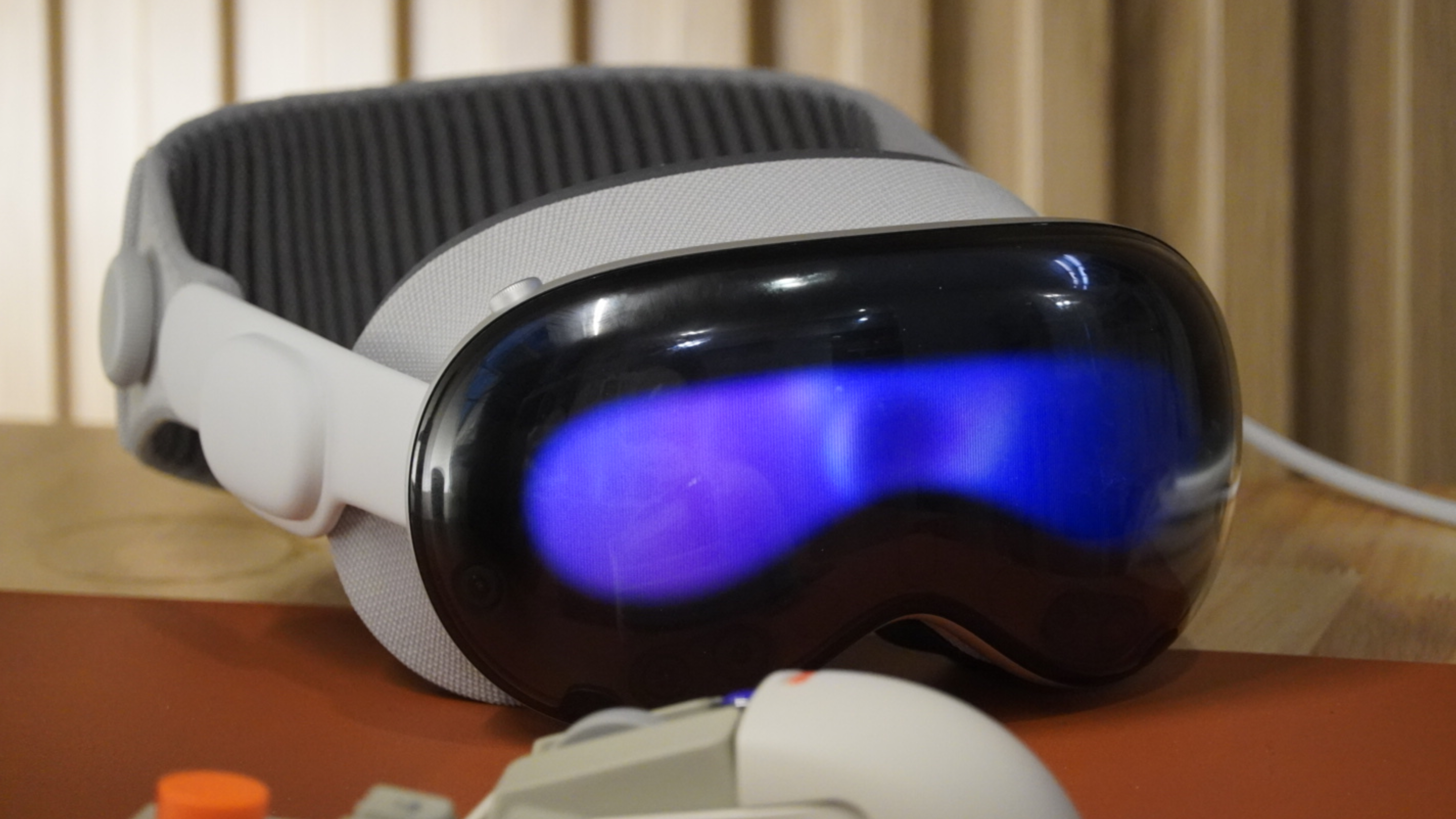Futuristic Apple Vision Pro Spatial Personas previewed ahead of imminent beta release, and they sound amazing
3D people are coming to the Apple Vision Pro.

The Apple Vision Pro has been on sale for a couple of months now, but while the $3,499 headset is on sale as a real, finished product, some aspects of the experience are still in beta and are likely to stay that way for some time to come. The impressive Persona feature, the one that takes scans of people's faces for FaceTime calls and more, is one example. But it's about to get a huge expansion.
Spatial Personas were confirmed during the WWDC event last year, and they take the Persona feature and then expand it beyond a 3D face by adding arms and torsos to the mix. What's more, Spatial Personas aren't locked into the same boxes that the Personas have to live in, and that's a potential game-changer.
We already expected Spatial Personas to be the logical endgame for the Persona beta, and hopes are high. But a new report says that Apple is ready for people to take the upgraded feature for a spin as part of an expanded beta that will be available to Apple Vision Pro owners starting today.
Beta people
Inverse's Ray Wong says that he was able to try Spatial Personas as part of a call with two Apple employees and, the way he tells it, the whole experience was mightily impressive. And with this being a beta, we can expect things to improve yet further in the coming weeks and months as well.
Wong says that the experience started as a standard FaceTime call with a member of the Apple PR team and someone from its Product Marketing team. But that was just the beginning and the people weren't locked in their Persona boxes for long.
"A quick tap in Control Center, however, pulled them out of their tiles and into my living room," he explains. "The two people weren’t actually standing in my living room, and they couldn’t see my messy apartment either, but their heads, hands, and the upper part of their torso floated in my room as if they were standing in front of me on the left and right."
Apple apparently uses cues like spatial audio and 3D positioning information to make it look and sound like people using Spatial Personas really are there. "They could move around in their physical space to position themselves closer or farther away from me or each other, and I could too," Wong explains, adding later that "everyone will hear each other’s voices relative to where they are positioned in virtual space."
iMore offers spot-on advice and guidance from our team of experts, with decades of Apple device experience to lean on. Learn more with iMore!
Here's a video of two Persona (plus the one looking at them) provided by Apple. This wasn't recorded from my demo yesterday. It's just a demo to show what spatial Persona on Apple Vision Pro looks likehttps://t.co/P5hGyJ82YD pic.twitter.com/0xNYTbtAmDApril 2, 2024
Wong gave a number of examples of the tests he was able to put the new feature through, including an impressive Freeform demo that allowed members of the call to interact with a huge canvas as if they were using a giant whiteboard in a meeting room. This, it seems, is what Apple always had in mind when it designed the Freeform app.
"We could walk up to the board and add circle[s to] things with the pen tool, rearrange notes, or add to the whiteboard in other ways," Wong explains. "In the middle of the whiteboard was a 3D model of a Mars rover that I could manipulate with a gesture or get a closer look from all directions." Apple reportedly said that "five Personas can simultaneously work on the whiteboard or a few can hang back and watch as others work." In a world where remote working is ever-popular, this kind of experience could be the future of work — assuming Apple can significantly reduce the cost of entry, that is.
The Apple Vision Pro's starting price of $3,499 remains an issue that the company is reportedly already working to address. But for now, the lucky few who do have one can look forward to testing Personal Personas out soon — the Inverse report says that it'll launch later today.
More from iMore

Oliver Haslam has written about Apple and the wider technology business for more than a decade with bylines on How-To Geek, PC Mag, iDownloadBlog, and many more. He has also been published in print for Macworld, including cover stories. At iMore, Oliver is involved in daily news coverage and, not being short of opinions, has been known to 'explain' those thoughts in more detail, too.
Having grown up using PCs and spending far too much money on graphics card and flashy RAM, Oliver switched to the Mac with a G5 iMac and hasn't looked back. Since then he's seen the growth of the smartphone world, backed by iPhone, and new product categories come and go. Current expertise includes iOS, macOS, streaming services, and pretty much anything that has a battery or plugs into a wall. Oliver also covers mobile gaming for iMore, with Apple Arcade a particular focus. He's been gaming since the Atari 2600 days and still struggles to comprehend the fact he can play console quality titles on his pocket computer.
